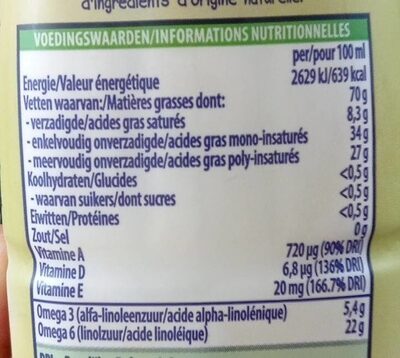Becel Olijf - Olives
La page de ce produit n'est pas complète. Vous pouvez aider à la compléter en l'éditant et en ajoutant plus de données à partir des photos que nous avons, ou en prenant plus de photos à l'aide de l'application pour Android ou iPhone / iPad. Merci!
×
Code-barres: 8719200109926 (EAN / EAN-13)
Marques : Becel
Labels, certifications, récompenses : Entrepreneurs + Engagés
Pays de vente : Belgique
Correspondance avec vos préférences
Environnement
Emballage
Transport
Signaler un problème
Sources de données
Produit ajouté le par kiliweb
Dernière modification de la page produit le par nonalinda.
Fiche produit également modifiée par charlesnepote, yuka.sY2b0xO6T85zoF3NwEKvlkNWSvGDoDTZbjDkvHCNwtmiAr7iePFN36T6Las, yuka.sY2b0xO6T85zoF3NwEKvlldrXdrdmx3bNEftmkaSnenVCYfTcN0u2LGqbKo, yuka.sY2b0xO6T85zoF3NwEKvlmweYeTFmij1Ex_lgXGa-f2SH83VU_RD5I3LPKs.
Si les informations sont incomplètes ou incorrectes, vous pouvez les complèter ou les corriger en modifiant cette fiche.






